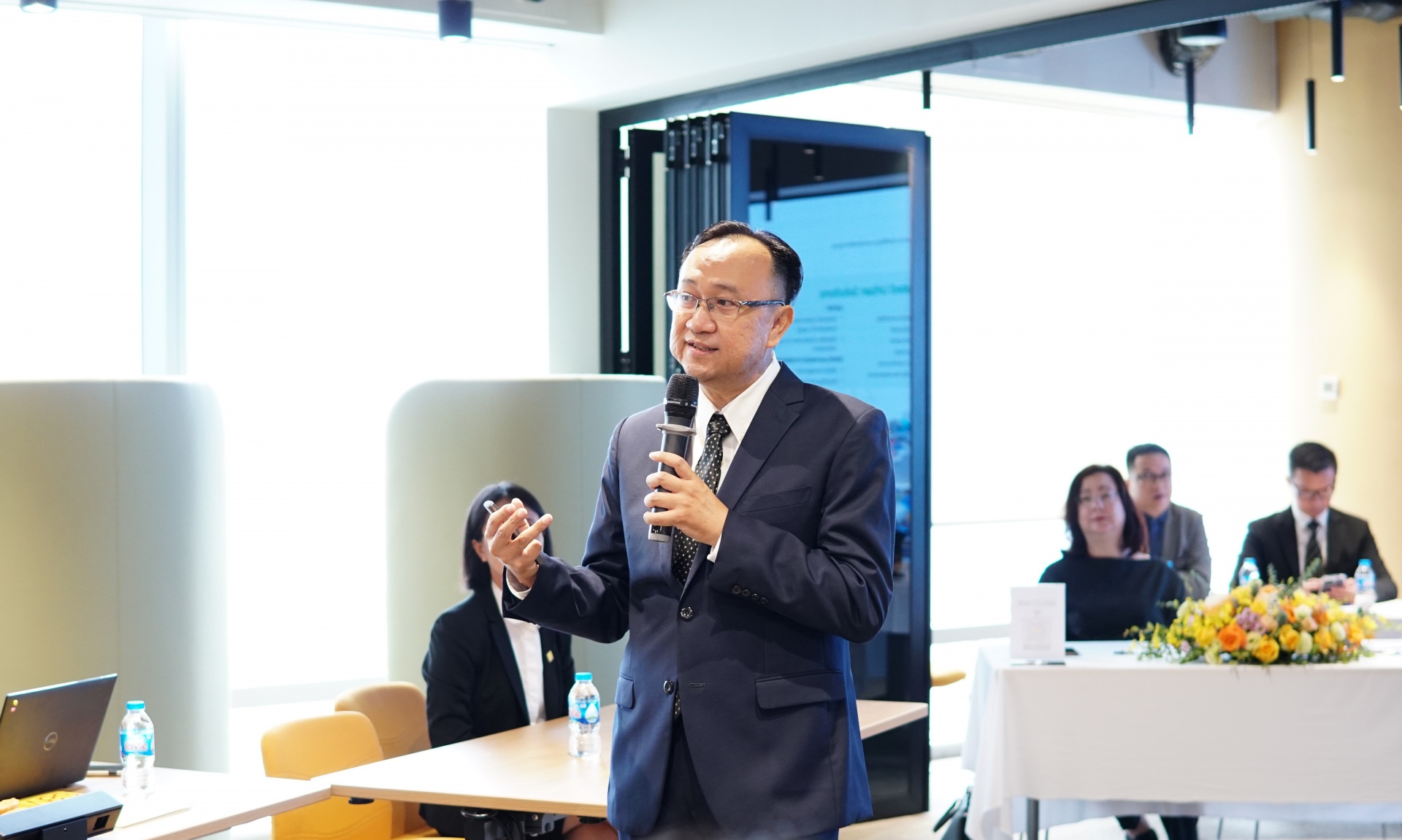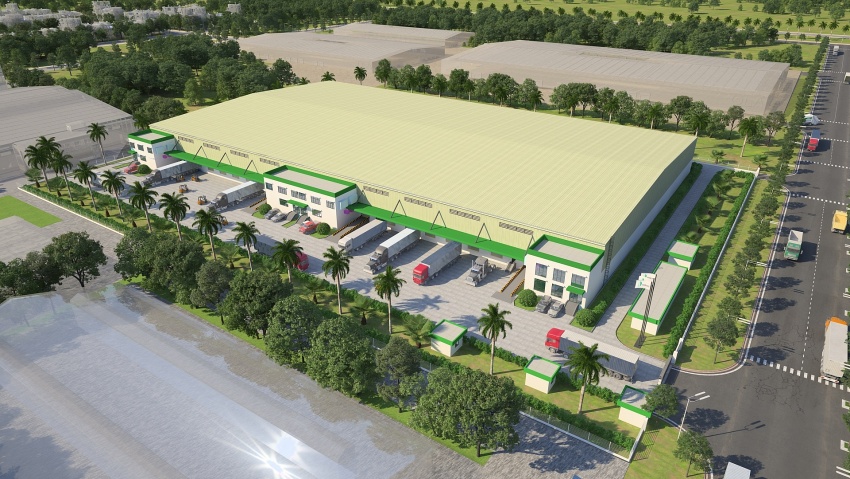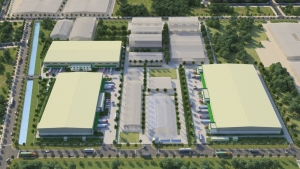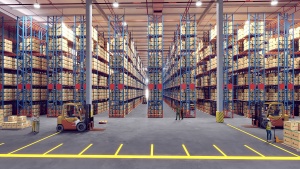Sembcorp pledges green products and investment in Vietnam
 |
| Charles Chong, country head at Sembcorp Development Vietnam Co., Ltd. |
Operating in Vietnam for some decades, can you tell me some of the advantages and disadvantages of your business here?
We are from Singapore, so we come from a background that understands foreign investment practices. Currently, most of our customers are foreign investors, so I think our understanding of their demands and requirements is our main advantage when operating our business in Vietnam.
The second point is that Sembcorp has quite a long history of being a foreign investor in Vietnam. More than 25 years of experience in this operating environment put us in a good position to meet our customers' expectations.
Because we are not only coming as warehouse developers but also have a history in industrial park development, we can synergise with our sister company, Vietnam-Singapore Industrial Park (VSIP), as we are located within its ecosystem and benefit from its excellent infrastructure.
Sembcorp is launching a new ready-built warehouse in Quang Ngai. What are the benefits of Quang Ngai in boosting business activities?
In Quang Ngai, when Sembcorp set up the VSIP project nine years ago, there was a lot of doubt and a lot of questions. However, I think today many of these questions have been answered. It is viable for factories to set up and operate in Quang Ngai.
We have labour-intensive industries like shoemakers, furniture makers, and the textile industry in Quang Ngai, as well as increasingly more complicated products. Manufacturers are moving there to make tire frames and metal parts and Japanese lens makers are producing high-end lenses and eyeglasses.
So there is high demand in terms of technical skills and these kinds of factories are willing to go to central Vietnam after they have seen it can provide the environment they need to operate in. So for us now, we are looking at extending the downstream product in the form of modern ready-built warehouses.
Vietnam is also improving its infrastructure. The road from Danang to Quang Ngai used to take three and a half hours, but now it's two hours. Manufacturers have benefited from these efficiencies compared to when they first committed to their projects. So though the opportunities are not as clear-cut as in the south or the popular areas in the north, the opportunities are there and we are committed to taking them.
What other destinations will be used for Sembcorp projects?
Our business plan is to look at the market nationally. We do not intend to restrict ourselves to North Vietnam, Central Vietnam, or any particular region. We plan to go where our customers need us or want us to be. We started development in Haiphong City in the north, which makes sense because that is an important logistics hub, and we also expanded to Hai Duong.
We are doing two projects concurrently in Central Vietnam, one in Nghe An and one in Quang Ngai. We will look at further expansion opportunities across the country. We are not restricted to what we see as the starting locations that have been announced because the market will continue to grow.
We will expand stage by stage, phase by phase, in a manageable way that follows the market development trends. And eventually, as we grow, the whole country will be our market.
 |
| Sembcorp pledges green products and investment in Vietnam |
How are sustainability and net-zero practices applied in Sembcorp's projects?
When we conceptualise our warehouse design, we set our targets. In this case, we have chosen the LOTUS standard from the Vietnam Green Building Council because we think we need to future-proof our product. Customers increasingly demand green products that factor in sustainability. To ensure we are not obsolete in the future, we must remain relevant to the demands of our customers.
We use energy-saving equipment for both internal and external lighting and select roofing materials that are heat reflective. We choose materials with lower embodied carbon, such as green concrete, and we paint with low volatile organic compound content. These provide comfort to the people who work inside.
We select water-efficient fixtures and have a rainwater harvesting system to reuse rainwater for washing and irrigation purposes. We reduce the use of treated clean water, reserving it for drinking and showering. All these efforts aim to save costs because you consume less electricity and water. Furthermore, being environmentally conscious reduces our impact on the environment as we build and operate the facility. We can achieve greater resource efficiency if our customers want us to provide solar electricity, and we will work with them to meet these requirements.
We take all these actions to be sustainability-conscious and to help our customers meet their corporate objectives. Increasingly, international companies are committed to setting sustainability targets.
Second is regulations. Governments have also committed to reducing their carbon footprint. I think the anticipation is that each country will issue its own regulations in this direction and channel industries to meet these objectives so we have to prepare ourselves in this regard. It is good to future-proof our business and prepare for such regulations.
| There is still room for Vietnam to continue to play as an international manufacturing destination. The competitive advantages are still there to be a manufacturing base for international companies. |
There are a lot of challenges in Vietnam's economy and around the world. Do you think this will affect investment?
I think that the short-term fluctuations are temporary. Vietnam has been moving very determinedly to welcome FDI and strengthen its position as an international manufacturing destination. It has made very good progress over the last 20 years and I don't think it's about to suddenly stop. There is still room for Vietnam to continue to play this role. The competitive advantages are still there to be a manufacturing base for international companies.
Recently, there have been issues around the world with high-interest rates and high inflation. But it doesn't change the direction Vietnam is developing and sets itself to develop.
We work as an international investor with operations in 10 countries, mostly in Asia. These kinds of ups and downs of the economy are a part of life. Vietnam remains a competitive manufacturing base and we will play our role in this industrial development sector, whether in industrial parks or ready-built warehouses.
High-profile foreign manufacturers have chosen to set up in Vietnam and we are happy to host them. Similarly, when we develop our downstream warehouse, we are placing ourselves to serve these manufacturers who want to come and have a solid supporting infrastructure to facilitate their core business of producing goods for export or distribution in the domestic market.
 | Sembcorp Industries pioneers in ready-built warehouses in central Vietnam Sembcorp Industries celebrates another milestone as it opens its newest warehouse facility in Quang Ngai, making Sembcorp the pioneer in modern ready-built warehouses in central Vietnam. |
 | Sembcorp set to break ground on first ready-built warehouse in Central Vietnam Located in the Vietnam-Singapore Industrial Park in Quang Ngai province (VSIP Quang Ngai), Sembcorp Logistics Park is the first ready-built warehouse to provide modern warehousing spaces, promoting operational efficiency and supply chain resilience. |
What the stars mean:
★ Poor ★ ★ Promising ★★★ Good ★★★★ Very good ★★★★★ Exceptional
 Tag:
Tag:
Related Contents
Latest News
More News
- CONINCO announces new chairman and CEO (December 10, 2025 | 11:00)
- How AWS is powering the next-gen data era (December 09, 2025 | 13:14)
- Outlook in M&A solid for Singapore (December 08, 2025 | 10:31)
- Vietnamese firms are resetting their strategy for global markets (December 05, 2025 | 17:04)
- LPBank Securities accelerates AI and data innovation with AWS (December 05, 2025 | 09:00)
- Improving traceability capacity with Zebra Technologies (November 26, 2025 | 10:08)
- Ho Chi Minh City engages 500 CEOs in dialogue on building global megacity (November 25, 2025 | 16:00)
- CEO shares insights on Phu My 3 IP’s journey to green industrial growth (November 17, 2025 | 11:53)
- NS BlueScope CEO highlights decade of sustainable steel efforts (November 15, 2025 | 10:00)
- SCG maintains strong cash flow and drives low-carbon growth in Q3 (November 07, 2025 | 09:53)





























 Mobile Version
Mobile Version